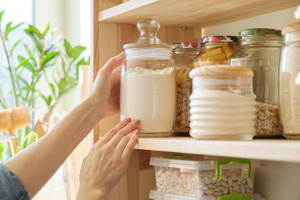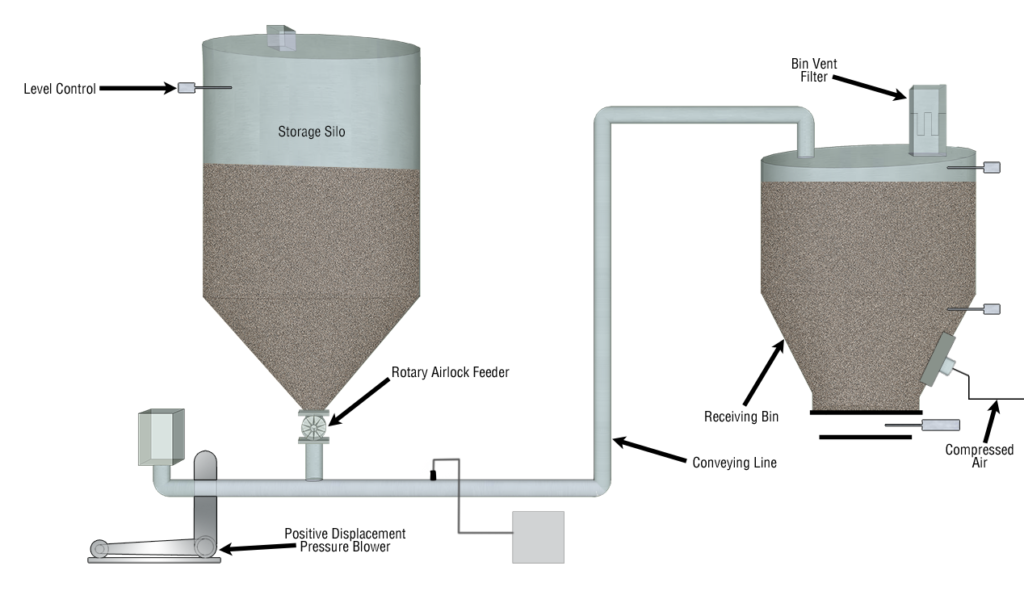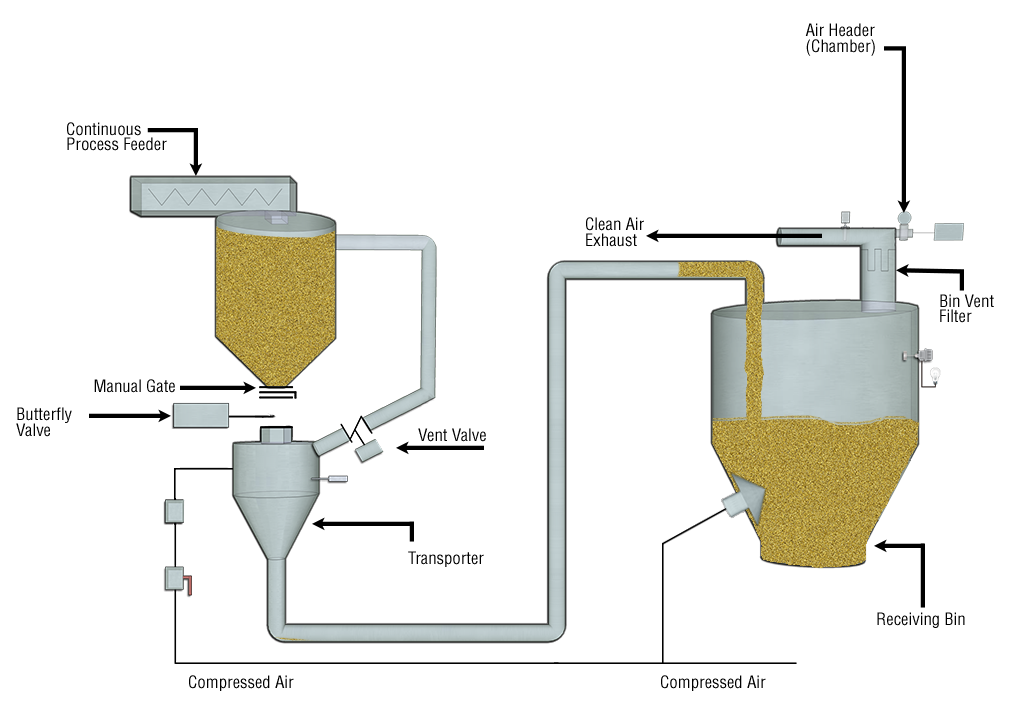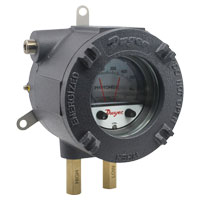 When walking through the grocery store and picking up a bag of flour or sugar, you’ve probably never thought about the process that it took to get these items packaged. The small particle size of these materials requires specialized handling to ensure there is minimal damage or loss, which is called pneumatic conveying.
When walking through the grocery store and picking up a bag of flour or sugar, you’ve probably never thought about the process that it took to get these items packaged. The small particle size of these materials requires specialized handling to ensure there is minimal damage or loss, which is called pneumatic conveying.
A pneumatic conveying system works by moving the material through an enclosed conveyor line using a combination of pressure differential and the flow of air (or another gas) from a blower or fan. Pneumatic conveying systems can be used to transport cement, starch, sugar, salt, polymers, plastic powder, and other powdered/granular bulk materials. The two most common forms of pneumatic conveying systems are dilute phase and dense phase.
Dilute Phase
A dilute or lean phase conveying system utilizes a high volume of low pressure air, typically below 15 psig, or vacuum as the force to move powdered/granular bulk materials through an enclosed conveyor line. The high velocity air flow typical of a dilute phase system moves materials in an airborne state. This option is cost-effective, and is well-suited for non-abrasive, non-fragile, and lightweight materials.

Dense Phase
On the other hand, a dense phase conveying system moves powdered bulk materials using a small amount of air at a relatively high pressure, typically above 15 psig. These materials are gently pushed through the conveyor line in controlled slugs, similar to extruding. As a result, dense phase is preferred for moving mixed batches, or materials that may be abrasive, fragile, heavy, or hygroscopic in nature.


The Series AT-3000MR/MRS ATEX/IECEx approved Photohelic® switch/gage is ideal for monitoring the pressurized air used to transport material in pneumatic conveying. It combines the functions of a precise, highly repeatable differential pressure switch with a large easy-to-read analog pressure gage. These units are compatible with air and non-combustible, non-corrosive gases, and all models provide both low and high limit control. The flameproof enclosure with optional glass window and aluminum housing protects the device in hazardous areas while giving local visibility to process pressure and set point status.
If you have any questions about selecting products for your application, the Dwyer Applications Engineers are available to assist by phone at (219) 879-8868 x6402, or by email at tech@dwyermail.com.
